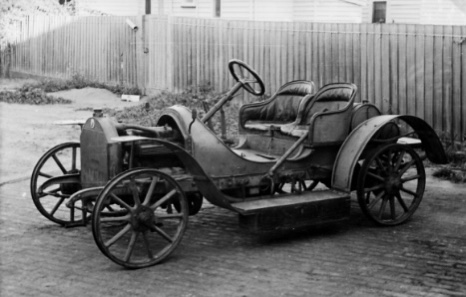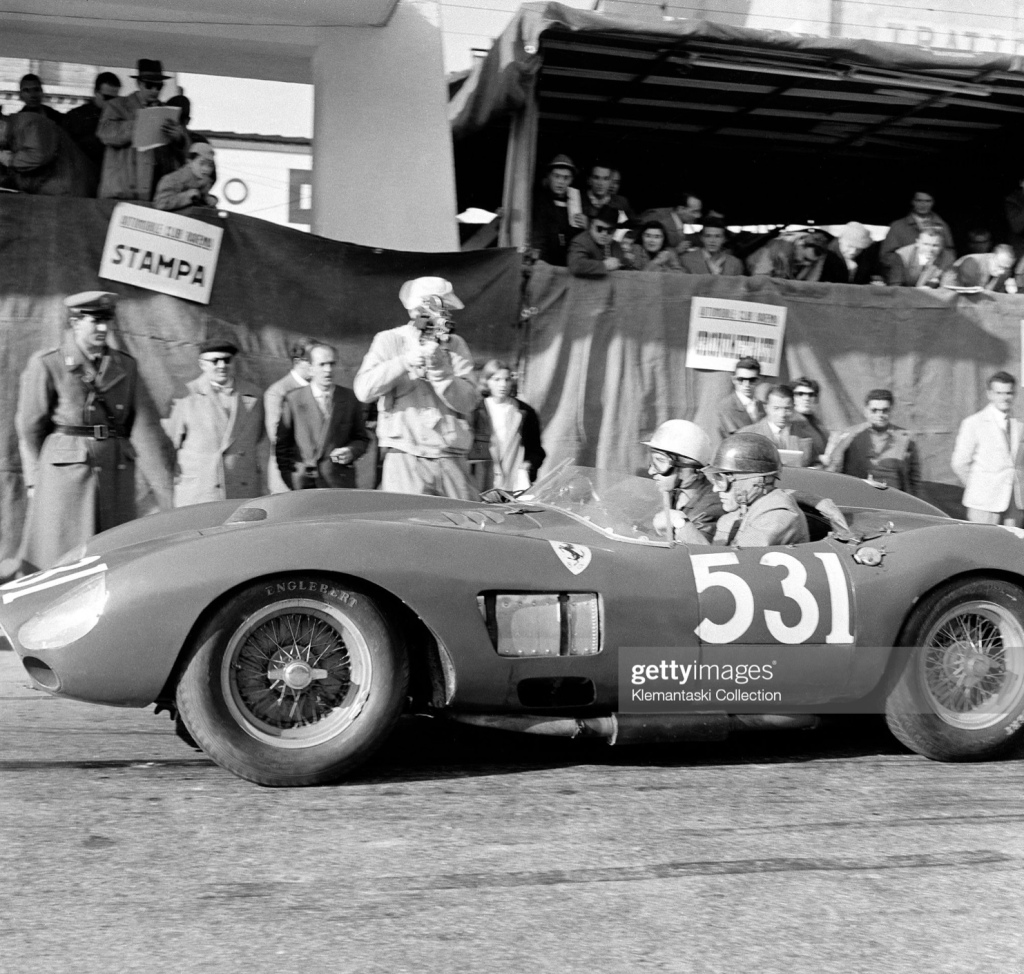
Murray Aunger in King William Street, Adelaide and his team aboard three Dort cars prior to departing for Darwin in July 1922…
Members of that Adelaide to Darwin and return trip were, left to right, Aunger with Donald McCallum, the organiser and local member of parliament, the Hon Thomas McCallum and WH Crowder of the SA Lands Department, and Cyril Aunger with Captain Samuel A White a prominent ornithologist
This article is about the exploits of Horace Hooper ‘Murray’ Aunger (April 1878-1953), sportsman, overlander, adventurer, businessman and motor engineer – born at Narridy, near Clare, South Australia.
Educated in Adelaide he was later apprenticed in the Kilkenny workshops of G. E. Fulton & Co., consulting engineers. He later joined the cycle works established by Vivian Lewis, collaborating with Tom O’Grady in the construction of the first petrol-driven car in South Australia. I wrote tangentially about Lewis and his machines a while back, click here to read the story; https://primotipo.com/2017/10/19/first-car-demonstration-or-parade-in-australia-adelaide-oval-18-october-1902/
A sportsman of note, riding Lewis bikes, Aunger was the colony’s one-mile (1.6 km) champion in 1899 and in 1901 held the Australian 50 Mile record.
As co-driver and mechanic, Aunger made two attempts with Henry Hampden ‘Harry’ Dutton to be the first to cross Australia from south to north by car.
Then there were only 500 cars registered in South Australia. Motorists facing ‘a hostile society of luddites, horse loving reactionaries, regressive law makers and over-zealous police’ wrote Dr Kieren Tranter. Dutton was then the wealthy 28 year old heir to a significant pastoral fortune, the family owned Anlaby Station outside Kapunda. Aunger was the brain and muscle behind crossing attempts which Harry later attributed to in their entirety to Aunger’s ability.
The pair left Adelaide in Dutton’s Talbot on November 25, 1907. ‘Angelina’ was powered by a 3770cc water cooled, monobloc four-cylinder engine rated at 20hp and was fitted with a four-speed gearbox.
‘Darwin lay almost 2100 miles (3380 km) away. ‘Obstacles confronted them on long sections of the route: rivers, treacherous sandhills and boulder-strewn country had to be traversed which no modern motorist would tackle without the advantage of four-wheel drive. Beyond Alice Springs, in the Northern Territory, the partners met the pioneering cyclist FE Birtles. The pinion in the Talbot’s differential collapsed south of Tennant Creek, where the car was abandoned given the wet season’s onset. Dutton and Aunger returned on horseback to the railhead at Oodnadatta, South Australia, and then back to Adelaide’.

Aunger, Dutton and Dick the dog aboard Talbot ‘474’ at Burra on the second, 1908 trip (NM)
Determined to try again when the rains ended, Dutton bought another Talbot. This car, nicknamed ‘474’ after its registration number, was more powerful and had a lower axle ratio than ‘Angelina’ as a result of lessons learned the year before. Again with Aunger leading the charge, the pair left Adelaide on June 30, 1908. At Alice Springs, local special magistrate and postmaster Ern Allchurch joined the team. Ern’s ability to transmit messages along the telegraph line enabled them to keep in touch with, and confirm their position to the outside world.
Tennant Creek was reached in thirty days; the stranded ‘Angelina’ was repaired and driven in convoy to Pine Creek before being freighted by train to Darwin. Continuing their journey by car, the trailblazers reached their destination on August 20. International motoring circles recognised both expedition’s demonstrations of skill and endurance – it was one of the greatest pioneering motoring feats in Australia, the pair averaged over 50 miles a day over 42 days at the wheel. Talbot ‘474’ is preserved in the Birdwood Museum, in the Adelaide hills.
As I have written in previous articles about Australia’s pioneering motor sport days, speed-record attempts between Australia’s capital cities received wide publicity and the record breakers were our earliest motor-sporting stars.

Murray Aunger and Robert Barr Smith, Adelaide en route to Melbourne in February 1909, Napier (SLSA)
In 1909 Murray accompanied Robert Barr Smith in his Napier to set a new time for the Adelaide-Melbourne journey, the pair held the record for only a few weeks.
Aunger regained it in February 1914, driving a Prince Henry Vauxhall imported expressly for the purpose. He left Lewis Cycle Works in 1909 to establish Murray Aunger Ltd which held Willys-Overland, Vauxhall, Morris and Dort franchises.
Together with F. Bearsley – achieving speeds of over 80 miles per hour (129 km/h) on the pipeclay of the Coorong – their time was 14 hours 54 minutes. They improved the previous record time of GG White and Fred Custance set in a 35hp Talbot, 20 hours six minutes, which had stood for over five years by five hours 12 minutes.
At a time the only route to Melbourne included 90 miles of the dreaded Coorong in south-east SA, and then on to the border and into Victoria via Casterton, Hamilton and Geelong – about 100 miles further than the trip now. The 80 miles of the Coorong desert sand were negotiated in under two hours, the cars fastest speed of 80 mph was achieved on a 10 mile stretch of dried up Coorong lagoon.
They also broke the Adelaide-Broken Hill record in the same car.

Murray Aunger and, perhaps F Bearsley, testing their Vauxhall Prince Henry in 1913/14 (SLSA)
Better management of the South Australian Railways (SAR) and the need for a railway line from Adelaide to Darwin was a thread which ran through the next phase of Aunger’s life.
By 1920 the railway system was crippled by mismanagement and failure to invest. To that end, newly elected Premier, Sir Henry Barwell, appointed American William Webb to run the SAR. By 1926 the state had the most powerful locos in the country, the grand Adelaide Railway Station was Webb’s monument.
In 1922 Aunger joined another expedition – the one featured at the outset of this article – of three cars which travelled from Adelaide to Darwin and back. The group included his brother Cyril, Samuel White, H Crowder and a local parliamentarian, the Hon Thomas McCallum and his brother Donald McCallum. They explored settlement possibilities, inclusive of a railway along their route.
Samuel White in a ‘The Register’ article wrote that there was much public wrangling about the route of the north-south rail line. The plan was to drive the proposed course from Adelaide to Darwin, and then return to Adelaide via Queensland to see for themselves the nature of the terrain, its obstacles and opportunities.
Aunger, ‘the greatest overland motorist in Australia’ was engaged by the group to organise the trip. This included shipping fuel, provisions and spares sent months ahead to Oodnadatta and then 700-800 miles further north by camel train. Teams were also sent from the Darwin end as well, to be prepared for what was a large group of intrepid, influential travellers.
Aunger selected and prepared three American Dorts, machines built by the Dort Motor Car Company of Flint, Michigan. These hardy, Lycoming four-cylinder, 30 horsepower vehicles were stripped of top protective equipment and doors to make them a lighter and more suited to the demands of the Australian bush.

The three Dorts en-route to Darwin in 1922 (SLSA)
Murray was again called upon to assist in providing cars and logistics to the government in assessing possible rail routes, organising a trip in June 1923 from Adelaide to the wilds of Oodnadatta, Alice Springs and Central Australia, again using three Dorts.
The expedition was three weeks, the all-star cast included the State Governor, Sir Tom Bridges, Premier Sir Henry Barwell, William Webb, Chief Commissioner of the South Australian Railways, Thomas McCallum, who organised this trip, the earlier one in 1922 and two others. This time the Dorts were further modified with removable grips for the tyres. The party travelled by train from Adelaide to Oodnadatta, picking up the Dorts at Terowie, between Burra and Peterborough.
After returning, both the Governor and Premier called on the Commonwealth Government to extend the railway, the line from Oodnadatta to Alice Springs was completed in 1929.
Later in 1923 the SAR sought cars suitable for running on rails. By November, Aunger had modified one Dort, eventually ten were in service, but they (or perhaps their drivers) were accident prone with some fatalities from collisions and roll-overs.
The first of these accidents occurred on the Clare line in December 1923 when a Dort collided with a gangers trike – fortunately the employees aboard the trike were able to jump clear. The driver of the Dort was Webb – his passenger the State Premier, Barwell. The nature of their business was Sir Henry’s attendance at a bowls tournament with Webb the taxi-driver!

Murray Aunger and the SA State Governor, Sir Tom Bridges aboard a Dort at Oodnadatta out front of the Pub (SLSA)
In 1925 Webb persuaded Aunger to become the motor engineer of the SAR, on a salary of £1000. There had been a large increase in the use of motors in the railways and Webb had commenced bus services to various parts of the State. A number of politicians believed Aunger had received favoured treatment from Webb. Webb was the subject of ongoing bitter political attacks for the American’s revolutionary changes to improve systems, processes and viability of the SAR. Aunger twice visited Britain and the USA in the course of his SAR duties.
In 1930 Webb returned to America. For several years attempts (after the Hill Labor Government lost power in 1927 and Butler Liberal Administration in 1930, in part over ongoing railway deficits and their impact on the State budget) were made in South Australian political circles to wreak petty revenge upon Aunger, despite his important part in rehabilitating the State’s railway system. He was dismissed in June 1937 for contravening Section 37 of the South Australian Railways Commissioner’s Act.
On June 6, 1942 he re-married, his first wife having died some years before, they moved to Melbourne. Aunger died on September 14, 1953 at Mordialloc, aged 75.
Whilst there is plenty of material on Aunger’s life in South Australia there is little I can find about his time in Victoria. If any of can fill in the gaps it would be great to hear from you – the fellow certainly had an amazing life of sporting, commercial and pioneering success!
Bibliography…
‘The Register’ 22 August 1922, ‘Australian Dictionary of Biography’- article on Aunger by John Playford, ‘Lassetters Gold’ Warren Brown, Trove- various
Photo Credits…
State Library of South Australia, National Motor Museum
Tailpiece…

Dunlop ad celebrating the Aunger/Bearsley Vauxhall Prince Henry Melbourne-Adelaide record breaking run in 1914.
Finito…



























































